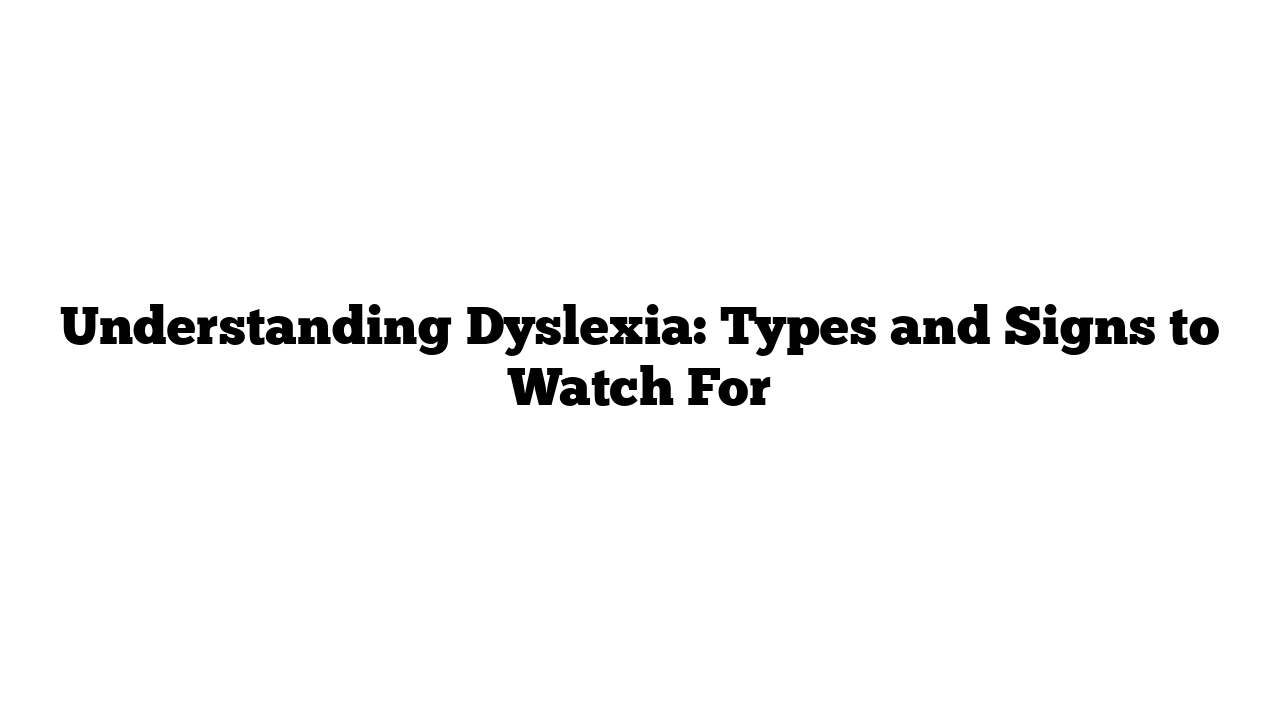Have you ever wondered if your child has dyslexia? Perhaps a teacher suggested it, or maybe you received an actual diagnosis. Either way, you might find yourself searching online for answers, only to feel even more confused. You’re not alone! Many parents face this dilemma.
Dyslexia isn’t just one thing; it comes in various types. Let’s cut through the confusion and explore the different types of dyslexia, their signs, and what you can do to help.
What is Dyslexia?
Dyslexia is a learning disorder that primarily affects reading. It involves difficulty with phonological processing, spelling, and writing. It’s important to note that dyslexia is not a reflection of a child’s intelligence. Children with dyslexia often excel in other areas but struggle with language-based tasks.
Types of Dyslexia
Understanding the different types of dyslexia can help you identify the specific challenges your child may face. Here are the most common types:
1. Phonological Dyslexia (Dysphonetic Dyslexia or Auditory Dyslexia)
Phonological dyslexia is the most well-known type. It involves difficulty processing sounds. A child may struggle with identifying, blending, or even remembering sounds.
Signs to watch for:
- Difficulty following multi-step instructions.
- Low vocabulary levels.
- Confusion of similar-sounding words, like “specific” and “pacific.”
What to do: Focus on improving auditory skills, such as auditory discrimination and memory.
2. Visual Dyslexia (Surface Dyslexia or Orthographic Dyslexia)
Visual dyslexia affects how a child processes visual information. Children with this type may have trouble picturing words in their minds.
Signs include:
- Confusing letters like “b” and “d.”
- Difficulty with irregularly spelled sight words, like “what” and “does.”
What to do: Enhance visual skills through activities like using flashcards and improving visual tracking.
3. Attentional Dyslexia
This type is characterized by the migration of letters within words. For example, “wind” may be read as “kind.”
Signs include:
- Frequent letter swapping or confusing words.
What to do: Work on visual tracking skills, which are crucial for reading.
4. Developmental Neglect Dyslexia
Developmental neglect dyslexia involves difficulty focusing on the sequencing of letters.
Signs to look for:
- Reading words from right to left.
- Letters appearing out of order on the page.
What to do: Focus on visual tracking and attention skills.
5. Rapid Naming Deficit Dyslexia (Rapid Auto Naming Dyslexia)
This type involves a struggle to quickly name objects or words, affecting reading speed and comprehension.
Signs include:
- Frequent word substitution while reading.
What to do: Combine various cognitive micro-skills to aid in reading fluency.
6. Double Deficit Dyslexia
Double deficit dyslexia is when a child exhibits symptoms from more than one type of dyslexia.
What to do: It’s essential to address all areas of difficulty, using a comprehensive learning approach.
How to Help Your Child
Understanding the specific type of dyslexia your child has is crucial for tailoring support. Here are some strategies:
- Educate Yourself: Learn about dyslexia to better support your child.
- Stay Patient: Encourage open communication about difficulties.
- Seek Professional Help: Therapists and educational specialists can provide targeted interventions.
“Education is the key to unlock the golden door of freedom.” – George Washington Carver.
A Supportive Approach
By understanding the types of dyslexia and their signs, you can be a better advocate for your child.
For more information on dyslexia and helpful strategies, visit medicaltimes.io. Here, you’ll find a wealth of resources to help you and your child navigate dyslexia together.
Remember, you are not alone in this journey!
